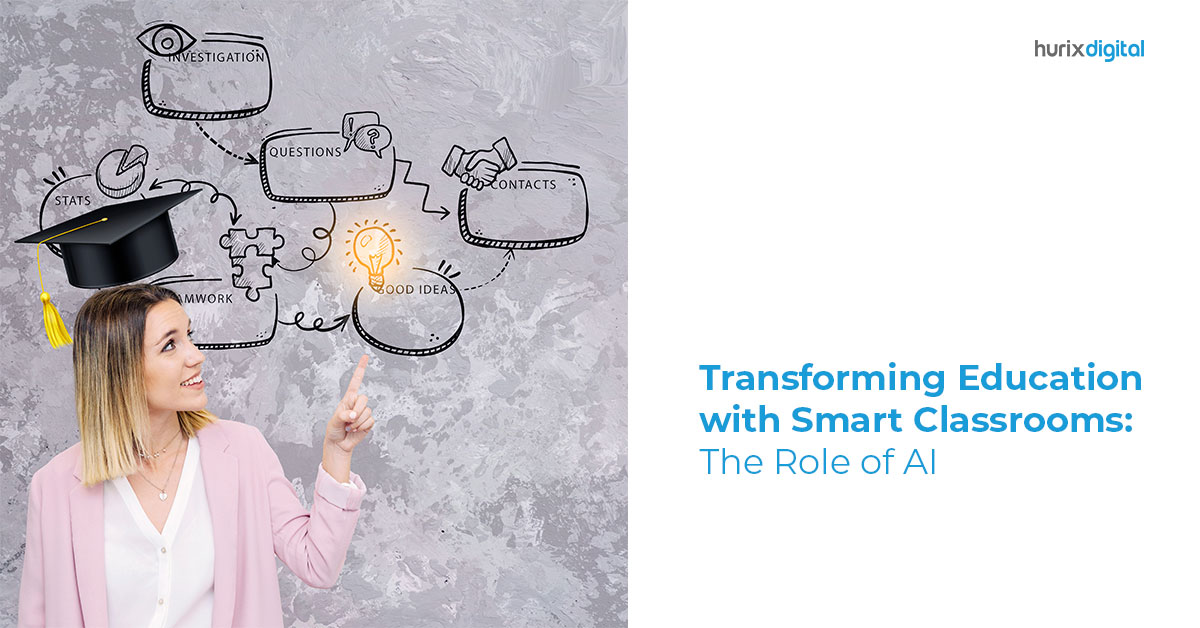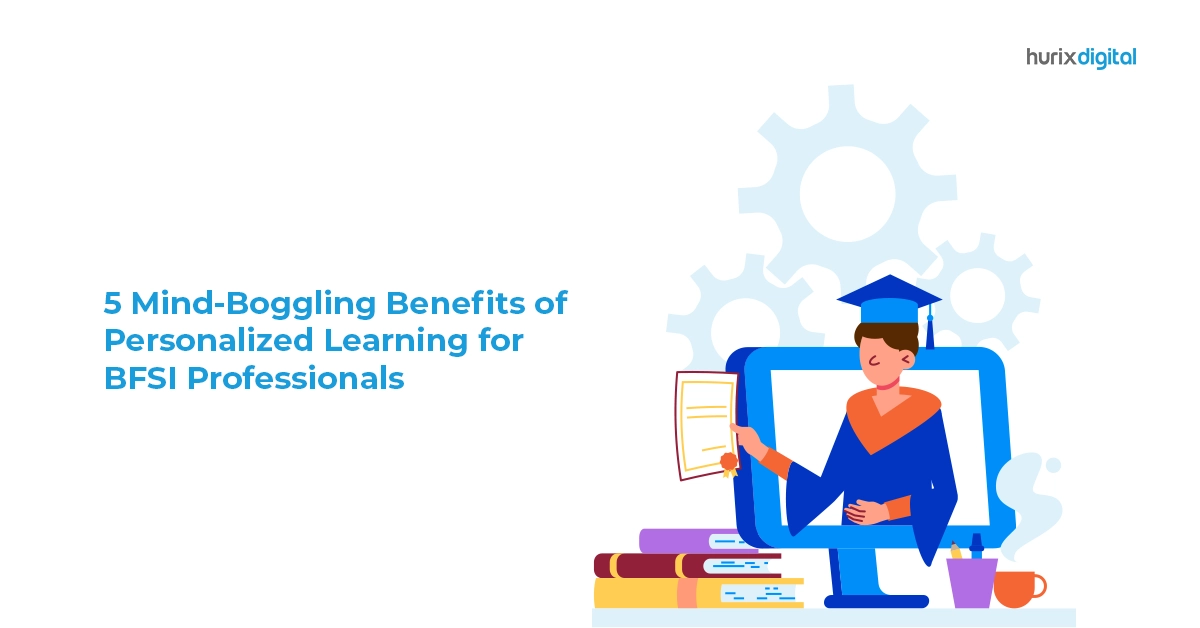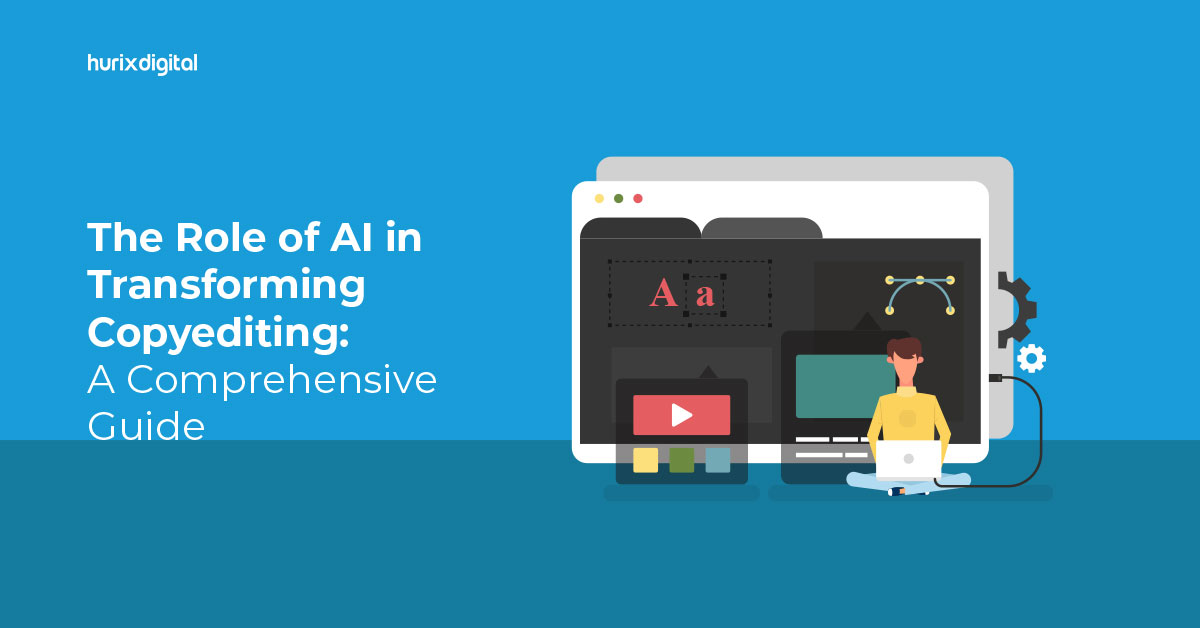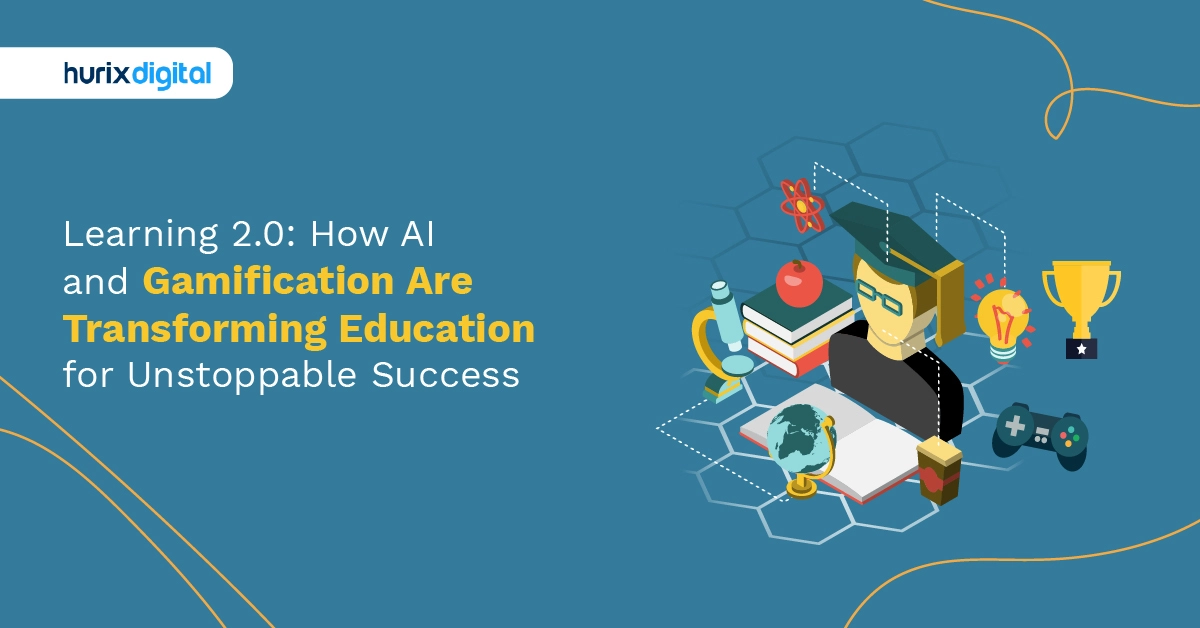
Learning 2.0: How AI and Gamification are Transforming Education for Unstoppable Success
Summary
Artificial intelligence, aka AI, and gamification in eLearning aren’t new concepts. But in recent years, AI and gamification have gained much traction.
The market size of generative AI was just USD 5.67 billion in 2020. It jumped to USD 23.17 billion in 2022 and is expected to reach USD 207 billion by 2030.
No wonder AI is the latest buzz in the tech industry, and the reasons are quite interesting to note.
AI and gamification have been some of the most evocative buzzwords in the education sector for a while now. This has only been exacerbated by the pandemic, which led to the sudden need to shift learning to online mediums
However, in practical terms, AI and gamification in education can play a major role in assessing student learning. In this guide, we take you through some of the key ways you can use these technologies to improve and streamline the student assessment process, thereby leading to improved learning outcomes for students.
Table of Contents:
- What is Gamification in eLearning?
- Benefits of Gamification in eLearning
- What is Generative AI in Education?
- Top 3 Challenges of Generative AI in Education
- How Can AI Help Assess Student Learning?
- Emerging Global Trends in eLearning
- In Conclusion
What is Gamification in eLearning?
Gamification involves integrating and using gameplay techniques and elements in a non-gaming ecosystem. While gamification can be incorporated in traditional teaching environments, its application in eLearning shows tremendous potential.
In the context of eLearning, gamification leverages interactive teaching methodologies to motivate learners and enhance engagement. By infusing game-like elements, it draws on the aspect of fun to turn learning into a dynamic experience.
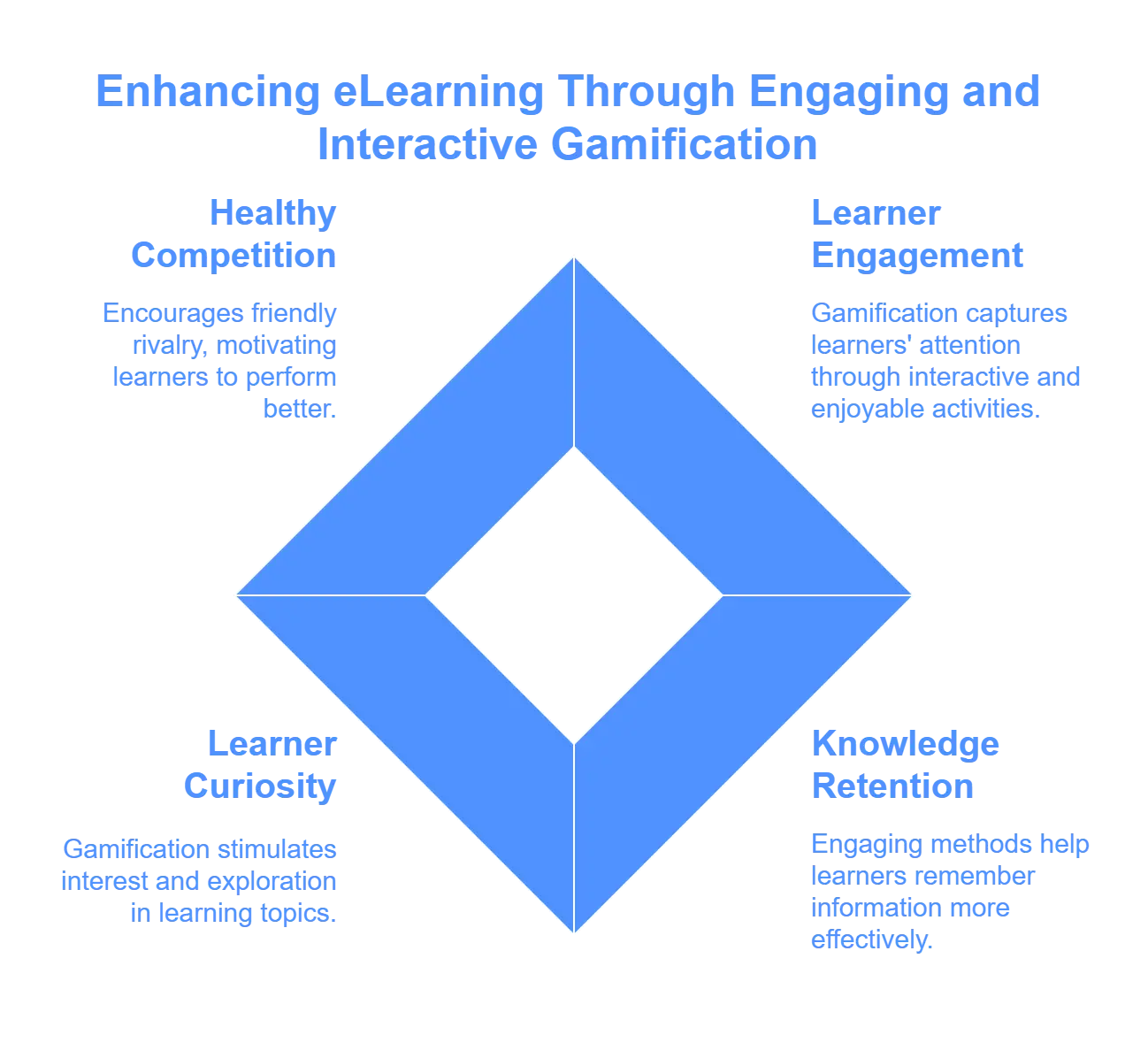
Benefits of Gamification in eLearning
Gamified eLearning offers significant benefits to learners. Here, we take a quick look at some of the top benefits of gamification in learning.
1. Increases Learner Engagement
The application of gamification techniques in eLearning environments enhances learner engagement. Gamification provides challenges, goals, rewards, and feedback, thus motivating learners to engage, compete, and earn recognition. It appeals to their desires of accomplishment and satisfaction. This, in turn, helps improve their learning outcomes. According to a study, 72% of people are motivated by gamification to work harder and accomplish tasks.
2. Promotes Knowledge Retention
From college courses to workforce development, increasing knowledge retention is necessary in education. However, this presents a challenge for many learners. Content gamification enables learners to absorb information in an interactive and fun-filled way. This is because gamification uses game-like elements in eLearning, such as rewards, points, etc. These elements and notions of play serve as incentives for learners to engage with the content meaningfully. As such, they are more likely to retain the information in the long run.
3. Stimulates Leaner Curiosity
Gamification in education is constantly evolving. AI in gamification is creating more personalized and adaptive pathways to seek knowledge. It enables content creation that can match the skills and interests of learners and consider their unique learning styles. Such an amalgamation of AI and gamification in education helps stimulate curiosity among learners.
4. Boosts Healthy Competition
Gamification in eLearning fosters healthy competition. When educational content is presented in a gamified form, learners can observe their performance in real-time. Using gamified features like leaderboards, scores, rankings, etc., instills a sense of competition and motivates learners to perform better.
Students can identify their strengths and recognize the areas that need improvement. Thus, gamification techniques encourage healthy competition that doesn’t place learners against one another. Instead, it enables students to take ownership of their own education and fill in the gaps.
What is Generative AI in Education?
By now, almost everyone knows that artificial intelligence or AI refers to the way machines simulate human intelligence. AI enables machines to conduct tasks generally related to human intelligence, such as problem-solving and learning.
Generative AI is a specific form or process of AI that generates new information, content, or output. This generative AI differs from traditional AI methods at a fundamental level. Defined rules and clear instructions drive traditional AI methods.
Generative AI uses machine learning algorithms to identify patterns from existing data and generate content. In the context of education, generative AI develops new content that follows curriculum features and customizes learning experiences.
So, we can say that generative AI in education generates human-like content by leveraging deep learning models. The output responds to varied prompts, including questions, instructions, etc.
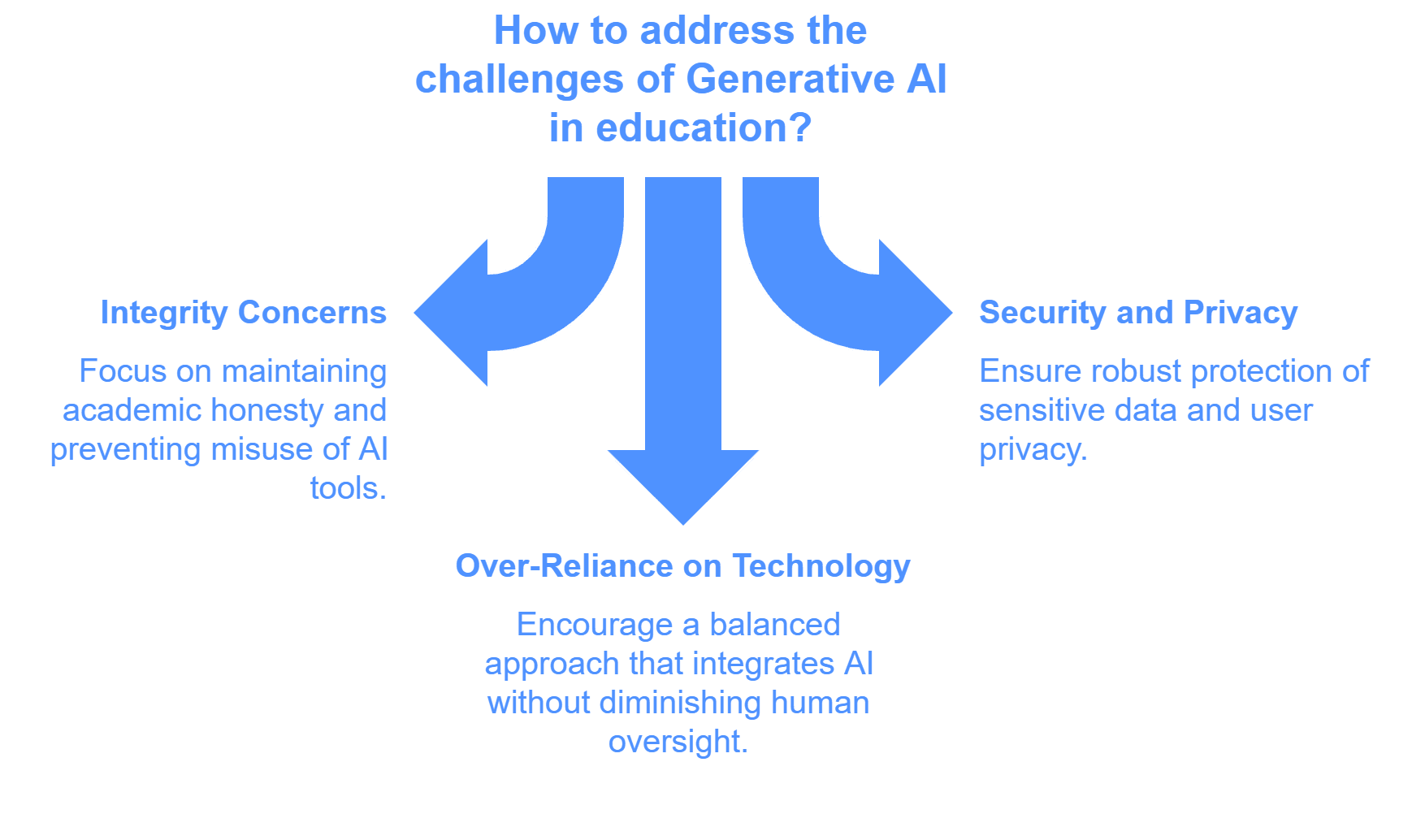
Top 3 Challenges of Generative AI in Education
While generative AI has a lot of potential to elevate learning, the technology isn’t completely free of challenges. Here are some of the major challenges of using AI for education:
1. Integrity Concerns
Generative AI is a technology that learns from existing systems, and that is exactly where the concern lies. Imagine that the data from which such a system learns is biased. The implication of this will include biases in the output.
As a result, students learning through this system will ingrain the bias without knowing about it. This challenge can be even bigger when AI and higher education are concerned.
Educators and developers must regularly monitor and evaluate the datasets to ensure their integrity and fairness to avoid such complexities.
2. Security and Privacy
Privacy can become a major concern for generative AI systems in education. These systems need access to huge amounts of data to generate content.
Such data can include sensitive student information. Potential data breaches and unauthorized access present genuine threats. This is where security concerns raise its head.
Institutions and organizations developing such systems must implement processes that protect student data and ensure complete privacy.
3. Over-Reliance on Technology
While generative AI is a helpful technology, relying too much on it to deliver learning experiences may not be ideal. Such a system can speed up things and offer customized learning solutions.
But it’s important not to eliminate the human factor from the educational landscape. It’s also vital to maintain a healthy balance between AI and humans.
Learners can still benefit a lot from real-time human interactions. Such interactions can help them develop their critical thinking and social interaction skills.

How Can AI Help Assess Student Learning?
In this section, we take a look at the various ways in which you can use AI and gamification to help streamline and improve the student assessment process. Needless to say, this discussion will also highlight the many benefits of these technologies in the education sector.
1. AI Can Help Personalize Assessments
One of the primary benefits of using AI in education is that it takes the model away from the traditional one-size-fits-all approach.
It also allows teachers to personalize the learning approach while doing the same at the assessment stage. This is crucial, as every student has a proficiency level and learning pace. As a result, AI tools can personalize assessments to ensure they cater to a student’s proficiency and skills, thereby enabling them to learn in a manner that motivates them to improve. Further, with AI, teachers are also exempt from the rather cumbersome process of evaluating assessments.
AI tools can curate assessments, evaluate them, tally scores, analyze trends in student performance, and much more. This enables teachers to spend their time on more high-value tasks rather than logistical ones.
Research by Quizlet shows that a greater percentage of teachers than students already demonstrate a positive attitude toward the use of AI in education (65% vs. 61%). This goes to show the scope of the use of AI in the years to come.
2. AI Can Help Provide Real-Time Feedback
One key benefit of using AI-powered assessments is that they’re available around the clock, unlike teachers. This allows eLearning platforms to offer students feedback in real-time, thereby capitalizing on when students are most interested in learning.
With all the data available, AI can be used to grade anything from mathematical problems to essays and abstract pieces of writing at times when teachers cannot. This ensures that students can learn and improve even outside of their traditional school hours if that’s when they’re most motivated.
However, in its current stage of development, one cannot wholly rely on AI to grade subjective content, but it still helps keep the learning process going. Nothing replaces a teacher who knows and understands the student and can decipher an individual’s subjective approach to learning.
This is where it becomes crucial that you choose edTech solutions that make meaningful use of AI and gamified assessment tools. The right LMS will enable you to customize the learning experience based on your institute’s unique needs while giving you a comprehensive walkthrough of how their tools can benefit the learning experience.
3. AI Enables the Use of Natural Language Processing
One key benefit of AI is that it also enables using Natural Language Processing or NLP. This helps enable conversational interfaces such as chatbots or virtual assistants, which can be crucial in helping students learn at any time while getting answers to their queries in real-time.
This helps make the learning experience less static and more conversational. As a result, it becomes more engaging, without students’ doubts and queries halting it.
Moreover, NLP and AI’s ability to learn each student’s specific use of language helps personalize the experience over time.

Emerging Global Trends in eLearning
Even as gamification in education continues to gain traction, artificial intelligence has been elevating this technology to a new level. Here are some of the emerging global trends in eLearning that have the potential to redesign the future of education:
1. Adaptive Learning
For a long time, traditional education systems thrived on the one-size-fits-all concept. But with the arrival of gamification in education, this concept is losing steam. Gamification is creating pathways to personalize the learning experience through adaptive learning.
This approach can adjust educational content and pace based on a learner’s preference, performance, and learning goals. Adaptive tools and technologies enable the development of learning activities and challenges that address learners’ specific needs. These tools and technologies can also offer feedback and support. Such a personalized learning approach can enhance user engagement and improve learning outcomes.
2. Immersive Technologies
Immersive technologies have the potential to make a significant impact on gamification in eLearning.
Immersive technologies enable the creation of interactive virtual environments. These virtual environments can engage learners’ senses and expand the scope of gamification in learning by creating experiences that generate curiosity and drive engagement.
Immersive technologies like virtual and augmented reality can intensify learning scenarios and ultimately enhance learning outcomes. Such experiences can enable learners to interact with the content more meaningfully. They can also be used to create engaging gamified narratives that stimulate learners’ imaginations.
3. Microlearning
The preference for faster and snappier solutions is on the rise. As per a survey, the completion rate of a microlearning course is 83% compared to 20% to 30% for standard learning courses. Learners today prefer concise information to lengthy lectures and learning materials. Microlearning is proving to be the answer to this demand.
Microlearning refers to learning content in small modules, making it easier to digest. When complex topics are broken down into concise units, learners can engage with them at their own pace. When incorporated into gamified learning, it can make learning more efficient and memorable.
For instance, short tutorials and video demos can help learners to enhance their knowledge. Interactive quizzes can enable learners to assess their progress during their learning journey. Microlearning can help learners access relevant content on the go whenever required.
4. Data Analytics
Data analytics encompasses the accumulation and analysis of data to gain insights that can be used to enhance learning experiences.
Data analytics can improve gamified learning by offering feedback and guidance based on analysis. eLearning platforms can use such feedback to customize their content based on learner behavior and performance. By harnessing the power of data analytics, instructors can provide feedback to learners to elevate their learning. It can motivate learners to enhance their efforts and aim for higher learning goals.
In Conclusion
AI and gamification assessment tools are no longer nascent technologies and have come to become an inseparable part of the overall learning experience at the K–12 level and beyond. Their benefits are immense, as they make education more accessible to all while catering to their unique learning patterns.
From personalizing assessments and providing real-time feedback to encouraging the assessment process through gamification, the education sector has witnessed a major transformation over time.
The role of AI in education is set to gain more prominence in the days to come. It is a clear sign of the changing times in education. Generative AI in education can offer a lot of benefits to learners.
However, it also presents some challenges. By partnering with an eLearning service provider, you can enjoy such learning experiences without considering the drawbacks.
With its advanced eLearning and training solutions, Hurix Digital has been at the forefront of this transformation. Contact us for a demo to help transform the learning experience.

Senior Vice President
A Business Development professional with >20 years of experience with strong capability to sell new solutions and develop new markets from scratch. New Market Entry Specialist with experience of working in two of the largest emerging markets – China & India. Also covered other key markets in APAC, US, EU & ME. Exceptional experience of conceptualizing, ideating and selling new learning technologies like VR AR, etc. across multiple industry verticals.
